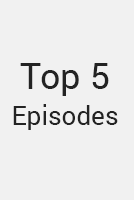Crash Course Navigating Digital Information
(2019)Streaming Episode Guide

Navigating Digital Information
In 10 episodes, John Green will teach you how to navigate the internet! We’ve partnered with MediaWise, The Poynter Institute, and The Stanford History Education Group to develop this curriculum of hands-on skills to help you evaluate the information you read online. By the end of this course, you will be able to: * Examine information using the same skills and questions as fact-checkers * Read laterally to learn more about the authority and perspective of sources * Evaluate different types of evidence, from videos to infographics * Understand how search engines and social media feeds work * Break bad internet habits like impatience and passivity, and build better onesSocial Media
Episode 10 - 3-12-2019


Click Restraint
Episode 9 - 3-05-2019


Data & Infographics
Episode 8 - 2-26-2019


Evaluating Photos & Videos
Episode 7 - 2-19-2019


Evaluating Evidence
Episode 6 - 2-12-2019


Using Wikipedia
Episode 5 - 2-05-2019


Who Can You Trust?
Episode 4 - 1-29-2019


Check Yourself with Lateral Reading
Episode 3 - 1-22-2019


The Facts about Fact Checking
Episode 2 - 1-15-2019


Introduction to Crash Course Navigating Digital Information
Episode 1 - 1-08-2019




